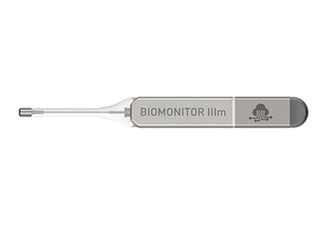
Schrödinger's RPM: a digital divide driver and a great equalizer at once?
By Amit Doshi, MD, FACC, FHRS
Chief of Cardiac Electrophysiology, Mercy Clinic, St. Louis, MO
In the world of cardiac electrophysiology, I like to think of remote patient monitoring as “the great equalizer.” It has allowed physicians to monitor not only many more people than they otherwise could, but also people with disabilities and mobility issues for whom coming to the clinic is an ordeal. And contrary to popular belief, RPM is not only for digitally savvy millennials and urbanites; it is open to workarounds that enable remote follow-up for the elderly, for those who live in rural areas, and even for people who don´t have the resources to upload their data on a regular basis.
All of this spectrum of capabilities was reality even before Covid-19, but once the pandemic hit, cardiac telemetry has become even more of an essential tool for avoiding interruptions in care. Its use benefits both patients and physicians in that it alleviates the volume of in-office follow-up visits and as such is especially practical for connecting with patients who live in senior facilities or nursing homes, or those with transportation issues. So while RPM devices have developed something of a reputation for being designed with younger, digitally versed users in mind, in our practice at Mercy Clinic we have used them to track the evolution of many patients that definitely don´t fit that profile.
To give a concrete example, at Mercy Clinic we have been doing telemedicine long before the current coronavirus crisis, engaging with rural patients in Missouri, Arkansas, and Oklahoma. There are many communities in those states that do not have local electrophysiology services, so we would often remote visit people (on referral from their primary care physician or cardiologist) ahead of them coming to our clinic, just to get familiarized with their health situation. Sometimes those preliminary telemedicine visits provide us valuable insights into patients´ health circumstances that we wouldn´t be able to get even in an on-site visit. Those who require an EP procedure would then come to Mercy St. Louis to get it done, go back home, follow up with their physician, and then we would follow up remotely.
At the peak of Covid, we made an even bigger push into telemedicine such that including our local patients, many of whom used to come for in-office visits, have now embraced it. And precisely in order to help people who have technical or other difficulties using RPM tools, our health system has a dedicated virtual care center staffed with clinical nurses whose job is to identify those patients, walk them through the process, and call them every day to check on them. Sometimes we would send them a video camera that they could link up to their home computer if they have no other way of visually connecting with us, or a weight scale, a blood pressure cuff, even a pulse oximeter so they could send us data about their vitals. These basic tools don´t give us information about potential heart rhythm problems, but they are a good intermediate step.
Now, when it comes to working with patients who do not face such challenges and are comfortable using RPM devices, we are up against a different kind of issues related to the technology. A consumer wearable such as the Apple Watch, for example, is clinically relevant only insofar as the user uploads the data it collects to their iPhone, converts it into a PDF, and sends it to us. So there are several steps that are patient-driven and even then, we are not getting real-time heart data – simply because consumer remote monitoring technology is not there yet.
I think this is going to be the next step in terms of advancing the field of cardiac telemetry: health care systems partnering with tech companies such as Apple and Google to both automate the transfer of patient data from wearables to health care portals and make that transfer possible in real time. And manufacturers themselves will need to refine the AI algorithms that power their devices in a way that they can separate real arrhythmias from artefact and noise, thus reducing the overwhelming amount of false alarms physician offices could receive. Now that would be a great use of clinical AI as it comes down the pipeline.






